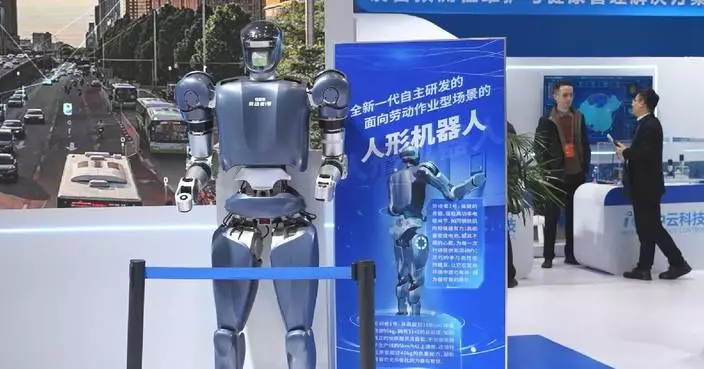China has installed the major device of the world's largest transparent spherical detector 700 meters underground to capture elusive neutrinos, often dubbed "ghost particles," to unravel the secrets of the infinitesimally small and the infinitely vast in the universe.
The 12-story-tall acrylic sphere with a diameter of 35.4 meters, buried deep in a granite layer of a hill in Kaiping, Jiangmen City in south China's Guangdong Province, is the core part of the Jiangmen Underground Neutrino Observatory (JUNO), a gigantic and complex scientific facility.
Neutrinos are the oldest and most primitive elementary particles that have existed since the beginning of the universe. Studying neutrinos opens the door for humans to understand the universe and existing matter in the world.
Neutrino research is at the forefront of particle physics, astrophysics and cosmology. Several significant breakthroughs in neutrino research have been honored with the Nobel Prize.
The sphere is fixed by a steel frame in the center of a 44-meter-deep cylindrical water tank. Key components include a stainless steel mesh shell with a diameter of 41 meters, a plexiglass sphere with a diameter of 35.4 meters and 45,000 photomultiplier tubes that act as "eyes" to detect neutrinos.
By Wednesday afternoon, the final pieces of photomultiplier tube module has been installed at the bottom of the sphere, a milestone marking the completion of the neutrino experimental detector.
"This is an important milestone. With this module installed in place, the construction work of our Jiangmen neutrino experimental detector main body has been completed," said Ma Xiaoyan, chief engineer of JUNO.
Next, the interior of the acrylic sphere will be filled with 20,000 tonnes of liquid that can "flash" when detecting neutrinos. The water tank outside the sphere will be filled with 35,000 tonnes of ultra-pure water, which is used to shield cosmic rays and radioactive background from rocks.
As one of the world's most powerful experiments to uncover neutrino mystery, JUNO will start operation formally in 2025, is expected to operate for at least 30 years.
"On the one hand, we want to figure out what the absolute mass of the neutrino is, and we also want to know how much the relative mass difference between the neutrinos is through the oscillation of the neutrino. Through these mass studies, we can construct a theory of our understanding of the physical world, allowing us to understand the universe and the physical world," said Wang Yifang, chief scientist of JUNO and the director of the Institute of High Energy Physics (IHEP) under Chinese Academy of Sciences.
The 45,000 photomultiplier tubes (PMTs) serve as the primary sensors for detecting the faint flashes of light produced when neutrinos interact with the detector's medium.
Among them, 20,000 are 20 inches in diameter and the remaining 25,000 - helping to calibrate the neutrino data - are smaller with a diameter of only three inches.
"Actually we compare the photomultiplier tube to an eye for detecting neutrinos, because we can't see the light emitted by neutrinos with naked eyes, it can only be detected by photomultiplier tube," said Qin Zhonghua, head of the observatory's photomultiplier tube system (PMT).
Each photomultiplier has its unique, non-interchangable position.
"We have strict requirements on the damage rate or failure rate of the photomultiplier tube during operation, which cannot exceed 1 out of 1,000 per year. In order to achieve this goal, we carried out a very strict test on the photomultiplier tube in the laboratory on the ground before installation, to do a final physical examination on it," Qin said.
JUNO is a joint effort, bringing together 750 international minds from 74 research institutions across 17 countries and regions. And upon completion, JUNO will become one of the world's three centers for neutrino research, alongside Japan's Hyper-K and DUNE in the U.S.

China's transparent spherical neutrinos detector finishes mainbody construction









